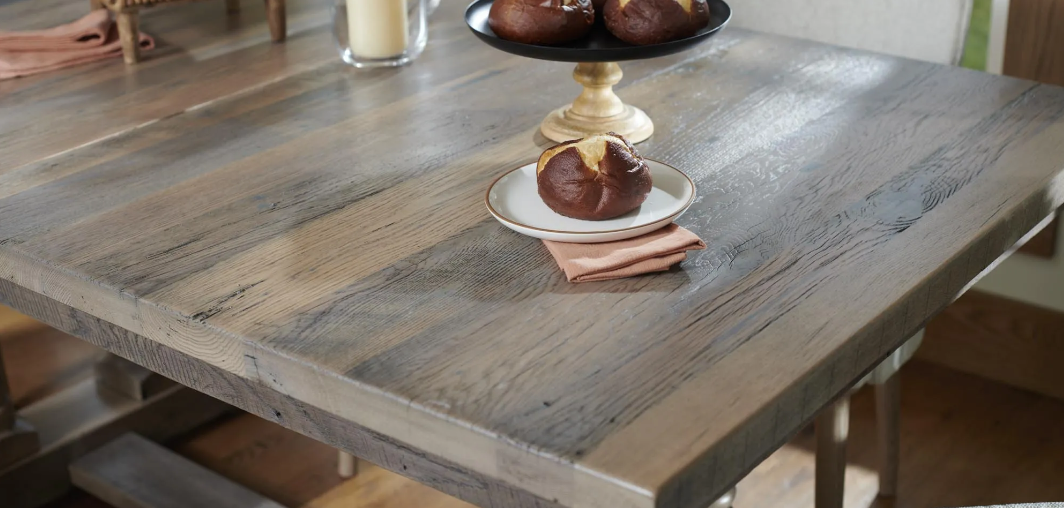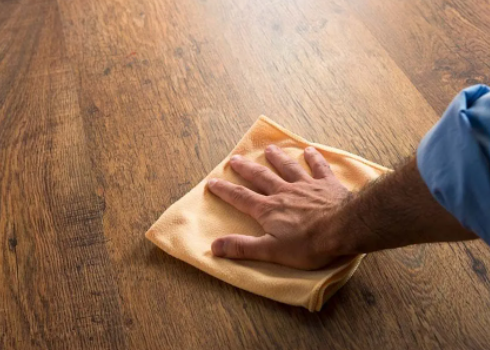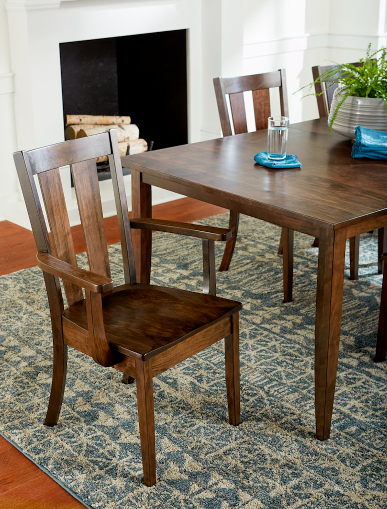
How To Care For Your Real Wood Home Furnishings
So you've welcomed an impressive and beautiful solid wood item into your family, what's next? Owning real wood home furnishings is both a privilege and a responsibility. Our furniture is constructed from actual trees, so caring for it takes a little more attention to ensure long lasting, beautiful service.

Cleaning
Generally a soft damp cloth followed by a dry cloth will be all you need to clean the finish. If a cleaner is required, use only a very mild soap and wipe dry. A high quality polish may be used occasionally. Apply polish with a soft cloth following the manufacturer's instructions.
Cleaning
Fingerprints, cooking residues, tobacco smoke, etc. will accumulate on the finished surface. They will not damage the finish, but should be removed occasionally to restore the finish to its original state. Wipe the finish with a damp cloth using a non-wax polish or mild soap.
Dust Removal
Dust build-up is simply airborne particles of dust collecting on the finish. If not properly removed, this build-up may dull or even scratch the finish. Simply wipe the finish with a cloth dampened with a mild detergent or polish.
Spills
Your finish is resistant to most household spills. If a spill should occur, it should be wiped up immediately to avoid any potential damage.
Excessive Exposure
Heat, high humidity, direct sunlight or liquids can damage both the finish and the wood. Take care to avoid these conditions.
Things to avoid
- Excessive waxing.
- Cleaners containing bleach.
- Cleaners with abrasives that may scratch the finish.
- Cleaners containing ammonia.
- Dyes and inks from newsprint and plastic bags may penetrate into the finish when moist.
- Writing directly on the surface with a pen or pencil. Use a pad underneath your paper.

The Fundamentals of Fine Finish
Curing and Durability:
When you receive your furniture the finish is 80% cured. This is similar to cement, it is hard, protective and ready for use right away, however, it takes an additional 3-4 weeks for the final hardening of the surface.
Humidity:
For the first 3-4 weeks in your home avoid heat and moisture to the surface. There will be natural movement of wood. Example, a table top will show a small gap at certain times of the year, and then it will close back up. This is a natural product, it is not plastic.
Abrasion & Scratching:
Catalyzed varnish is tough, but not bulletproof. There will be scratches and dents along the way if you use your furniture. There are ways to avoid this. Do not slide items across furniture, make sure to lift and move. Sliding dishes or cups that have rough bottoms will scratch the surface. Make sure you put soft protective pads underneath vases and decorative items. Keep your furniture free of dust. Dust particles, while small, can be abrasive. Remember, this is a durable varnish, but even the toughest automobile finish will scratch with abrasion.
Spills & Water Rings:
Blot up spills immediately. The surface finish provides a tight web of protection that makes most spills that would ruin a normal lacquer finish not a problem. However, moisture for an extended period of time can cause slight discoloration that, with time, will in most cases disappear. Try to avoid this by blotting up any spills as they happen.
Extreme Heat:
Avoid placing extremely hot items on the surface, especially in the first 3-4 weeks in your home. At any time you should never take anything directly out of the microwave or oven and place directly on your furniture. The average heat out of a microwave is 211°F. Catalyzed varnish is tested to withstand temperatures up to 140°F.
Natural Darkening:
Especially so with a natural or light color. Make sure to rotate place mats and accessories to prevent uneven aging when exposed to natural sunlight. Remember to rotate table leaves, as well. Table leaves that are always stored away from sunlight will not age the same as the rest of your table.
Products to Avoid:
Please do not clean or polish your wood furniture, cabinetry or flooring with products containing silicone, wax or ammonia. These additives will damage varnish with repeated use. Wax buildup on varnished wood will react to moisture, heat and solvents causing hazing or blushing that would not typically occur on a clean surface. Silicone will prevent varnished wood from ever being refinished in the future. Ammonia will soften any finish, with repeated use, making it soft and sticky.
Implement these best practices and the beautifully finished real wood home furnishings will serve you and your family for decades!
Questions? Contact Us and we'll be happy to answer any questions you might have concerning your real wood home furnishings.
